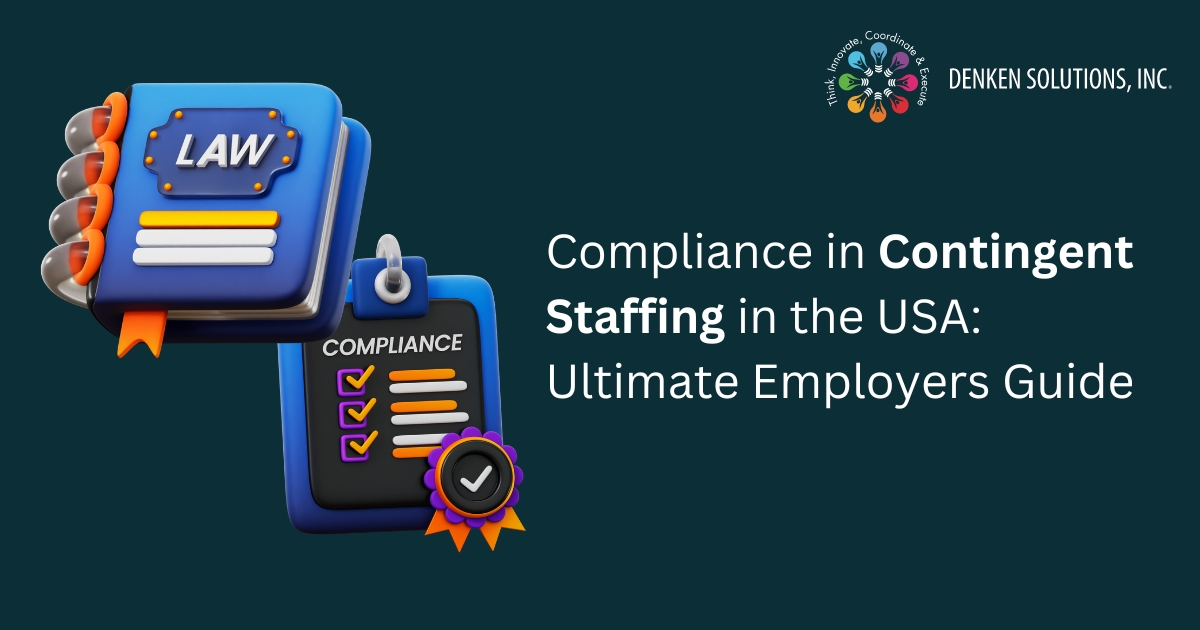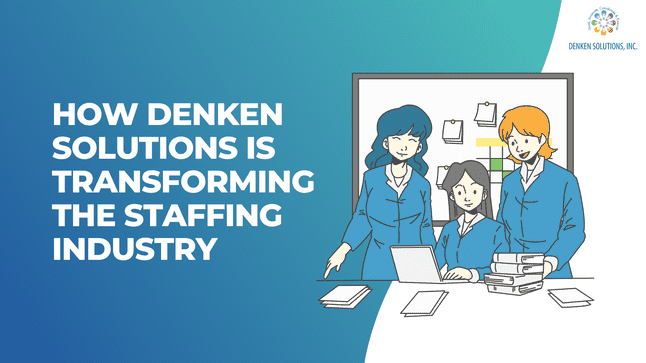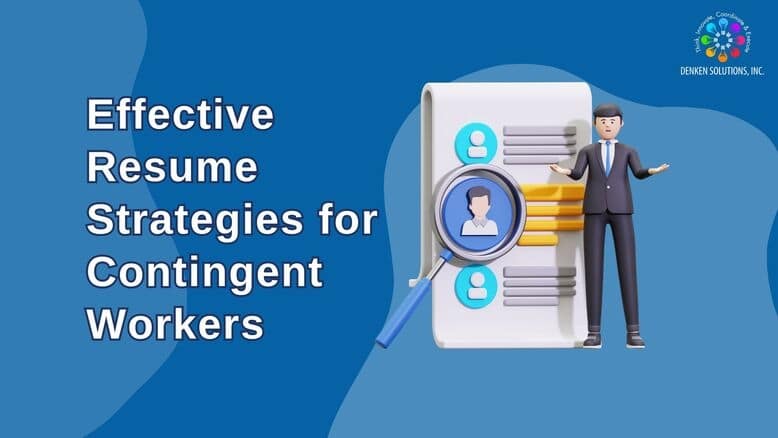Key Considerations for Contingent Workforce Compliance
As defined by the Bureau of Labor Statistics, contingent workers are “people who do not expect their jobs to last” or who “report that their jobs are temporary.” In the course of the COVID-19 pandemic, organizations paused hiring and initiated mass layoffs, the contingent workforce industry gained momentum and has been prospering since then. Companies found it easier to comprehend flexible staffing solutions and considered occupying remote contingent workers, like packaging engineers and data scientists, for their business operations.
Independent contractors, freelancers, or temporary workers hired through a staffing agency can be counted as contingent workers. While present-day employers are steadily switching to contingent staffing to attain agility and scalability in operations, they must remain conscious of the complicated layers of contingent workforce compliance to prevent legal downfalls. The article sheds light on the major considerations and the best practices for ensuring adherence to contingent workforce compliance.
Things to consider for ensuring contingent workforce compliance
Classification of workers The Internal Revenue Service (IRS) puts down some guidelines for deciding between fixed employees and temporary or contractual staff. Failure to classify employees based on these guidelines may lead to legal consequences. The accurate categorization of every employee based on these guidelines can ensure that they are given appropriate salaries for their position and role, whether it’s a java developer job description or otherwise. Additionally, understanding the benefits of temporary staffing can help organizations better leverage the flexibility offered by contingent workers.
When a company hires permanent employees, they need to be provided with fixed monthly salaries. On the other hand, independent freelancers or contractual employees need to be paid only the amount set in the contract based on the hours of their work and the tasks assigned to them.
Fair Labor Standards Act (FLSA) The Fair Labor Standards Act (FLSA) passed in 1938 aims at shielding employees against any unfair labor practices at the workplace. The norms set by this act cover requirements of employees in terms of minimum wage, overtime work, and restrictions on child labor. Hence, be it permanent or contractual employees, organizations need to abide by the FLSA, thereby elevating a fair work culture. Awareness of contingent labor trends can also help businesses align their practices with evolving workforce standards.
Tax regulations Apart from considering fair pay practices, it is necessary for employers to sail through the tax landscape appropriately by staying updated about recent developments in state and federal tax policies. They must issue Form W-2 or 1099 for every employee to make sure that the necessary data related to their earnings are appropriately reported to the government bodies.
Health and safety policies Enacted in 1970, the Occupational Safety and Health Act (OSHA) makes it mandatory for employers to guarantee and follow safe and healthful working conditions. In this regard, it is necessary that employers consider investing in training and education programs for employees related to their occupational safety and health.
Employee benefits and protections Considering the norms laid by the Affordable Care Act (ACA) and the Family and Medical Leave Act (FMLA), employers can provide appropriate health insurance plans and medical coverage to employees, including contingent workers. Addressing contingent worker labor costs effectively is crucial when deciding on the scope of benefits to offer.
Best practices for ensuring contingent workforce compliance
Design a robust and all-inclusive on boarding process Your on boarding process is the mainstay of a compliant working relationship with your contingent staff. Thus, you must precisely demonstrate the company’s policies and norms, job roles and expectations, and all other necessary details while on boarding contingent employees.
Ensure periodic assessments It is of utmost importance that you conduct routine assessments of the employment laws, policies, and practices that you have deployed into your workforce operations to determine if those are accurately followed. This will assist you in identifying gaps or issues related to contingent workforce compliance, thereby enabling you to take appropriate action.
Stay updated and informed Due to the dynamic nature of the global economic and labor market, the employment law and regulations keep on evolving along with changing conditions. As such, it is essential that you keep yourself educated and updated about the latest developments in the context of employment laws and regulations.
Streamline compliance processes through automation Just like you have taken the step of implementing technologies in every aspect of your business, you must consider utilizing automation for simplifying and refining your compliance processes. For instance, you can use centralized payroll systems for easy tracking and analysis of payroll data necessary for compliance grounds.
Seek legal guidance The tangled and elaborated nature of contingent workforce compliance may make it challenging for employers to understand. In such cases, it is suggested that you seek guidance from legal experts and get a proper insight into the employment law landscape.
Ensure contingent workforce compliance with Denken Solutions
Compliance remains the centerpiece of contingent staffing and by now, you are aware of it. Strategic collaboration with a renowned staffing firm like Denken Solutions can give you the guarantee of contingent workforce compliance. Here’s why:
With inevitable knowledge pertaining to contingent employment laws, our staffing experts help you stick to industry-specific standards and obligations while establishing your contingent workforce. Our workforce solutions are designed in parallel with IRS guidelines, which help us classify every worker in proper terms. We take on a foresighted approach to identifying and eliminating legal risks, helping you to establish a compliant workplace. We have a well-designed and organized hiring process that concentrates on compliance from the very beginning. We monitor ongoing legislative developments and the latest updates related to the contingent workforce to help you maintain compliance.
Conclusion
To conclude, employers willing to undertake contingent staffing solutions for their businesses must remain aware of the compliance requirements arising from worker classification, fair pay practices, health plans and medical coverages, tax regulations, and employee benefits and perks. Besides keeping up with the ongoing legislative changes and developments related to the contingent workforce, employers need to establish a streamlined onboarding process, automate payroll systems, conduct periodic audits, and seek legal help if required.
Denken Solutions can come to your rescue and help you create a strong and talented contingent workforce while ensuring compliance with employment laws and regulations. If you want to know more about our services, do not hesitate to connect with us.



